Features
BETWEEN ABSTRACTION & EMPATHY IN SARATH CHANDRAJEEWA’S VISUAL PARAPHRASES – PART III
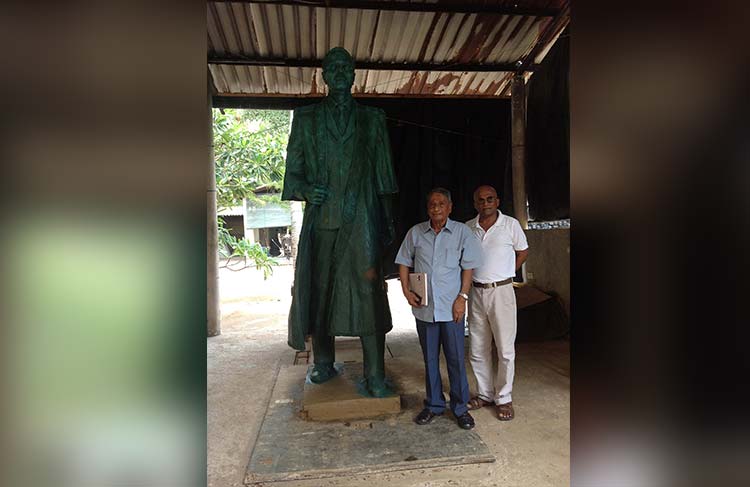
by Dr. Santhushya Fernando, Dr. Laleen Jayamanne and Professor Sumathy Sivamohan
Unwritten I, II, III
In Sarath’s exhibition Visual Paraphrases there are three abstract paintings titled Unwritten I, II, III presenting an ‘open’ sequence with the Roman numerals. Why not the current Arabic numerals, we wonder. However, they were not hung together on the walls but arranged among the other more painterly abstract and semi-abstract expressionist work. Despite this, we will consider all three together as the artist himself has offered us a numerically abstract sequence rather than a spatially contiguous one and in so doing has stirred us conceptually to think their interrelationships even as we go deeper into the surface of these works. How shall we do this? Does a surface have depth? Might we slide laterally on it? As Sumathy might say, the ‘interstices’ or ‘gaps’ among the three paintings are significant in their quality of openness, a provocation for thought to take wing, one hopes.
The word ‘Unwritten’ is itself significant, different from the more familiar ‘Untitled’ as it makes one want to know the ‘what’ and ‘why’ of it? It seems significant that Unwritten I was painted on a ‘samara’ ground of the familiar and appealing orange colour and suggested by a wall at the Jaffna Railway Station that Sarath once saw. They appear to be graffiti like markings of fragments of letters, layers of them and also erasures, in black. The lines are ordered horizontally but the surface is disorderly, patches of scrubbings.
In this specific context any sign of erasure carries a hint of violence, memory of linguistic violence in Lankan political history and ethno-nationalism; the tarred Tamil Street signs of the 1950s. Sarath who was a child at the time, was told about the impact of the ethno-nationalist program of 1958 by his father who worked in Jaffna at that time as a multi-lingual policeman. He has visited Jaffna as a child while his father worked there, when he himself lived in Nuwara-Eliya with his grandparents.
Unwritten II evokes ancient history, rock and copper inscriptions and the ‘writing’ or motifs are highly ornamented, like calligraphy – ‘beautiful writing’ and suggests Shodo, ‘the way of the brush’ as in Japanese painting. The soft colours of the ornamental motifs, often curved, are pastel against a reddish hue and the edges of the painting are frayed like an ancient parchment. Whereas, Unwritten I’s hard-edged clearly delineated border makes it self-contained. One wonders if Sarath painted these three works also in chronological progression with one painting leading to the other or if all three were first conceived prior to painting. But then how do we as academics know how an artist’s mind works, its subtle unconscious processes. One feels that these paintings open a portal to ‘pre-subjective’ or pre-personal sensations, intensities and affects. There is no narcissistic Ego in this zone, much less a Super-Ego of the artist in search of his (sic) marketable signature.
“Eyeless in Gaza at the Mill with slaves” Samson Agonistes, Milton (1671)
And Unwritten III is the Ur image (also privileged as the cover image of the catalogue), a tribute to the primordial genesis of the human ‘will to write’… It feels as if making the two previous paintings has propelled Sarath into this embryonic zone of emergence of mark making by hand. The marks in this painting appear to be letters in an embryonic state, appearing to make meaningful shapes or letters. But the plethora of lines are in a virtual state, not yet actualised into letters, words, alphabets, writing. There are no hard or torn edges to this painting which appears without a framing frame as though the movements which animates it can go on without limit, like language itself.
This painting creates a sensation of movement because of the large centred circles. On closer observation they appear not to be concentric circles but a spiral of sorts, which is a dynamic line in nature as in the most ancient nautilus shell or a whirl pool. The horizontal lines in the top half of the painting are fairly tightly arranged, stable, made up of small pieces of charcoal pasted on to the surface of the painting, one by one, creating a slight thickness, a 3D effect, whereas the linear pencil lines are faint and light. But the marks swept up in the spiral are looser, almost playful as it sweeps it all up.
The swirling spiral is lightly brushed with a touch of gold and silver which makes one focus on the ‘ground’ or ‘surface’ of the painting which also has a few dabs of pure white paint. But neither art historical terms feel quite right because the markings seem to emerge from it rather than being simply on it. Are we seeing an embryogenesis of the ‘will to write’, one wonders; a kind of cellular drama of the momentous human struggle to create writing.
As the abstract shapes jostle and play around, writing begins to emerge as a letter here and there or a line about to turn into a familiar letter, say, in Brahmi, Sanskrit, Sinhala or … The overall Black & White with many shades of greys in between, modulates the space. Its regular rhythmic repetitions are like those of nature (not mechanistically uniform) therefore they stimulate the mind’s potential to differentiate this shape from that, this impulse of the hand from that, this material from that. The impulses of the hand and mind, a feel for texture, are perhaps more palpable to ‘the beholder’ of the painting face to face. This is the heady zone of intuitive perceptual awareness or consciousness.
This unusual painting feels like a tribute to the impulse and struggle of language creation as writing, in the movement of the hand, eye and brain in mark making. It’s a play of forms before they solidify into this or that language. A play impulse is perceptible in the many movements (scribbling, doodling, erasing … patterns of lines). We see the struggle of the mind, hand, eye moving towards that profound form of human abstraction, language as such (a symbolic form) which differentiate the human from other animal species but with whom we do share profound feelings.
They say that we started talking way before we began to write. Talking also is a form of abstraction, giving meaning to sounds coming out of the mouth and into the ears. The feel of the painting, its opacity is such that it just might be imagined as a paleo-anthropological object dug up by Siran Deraniyagala (and others), awaiting decipherment.
Sarath wanted a delicate grid of Gauze for his ground/surface/background (which is it?), pasted on a hard board to paint Unwritten III on. What are the implications of this faintly visible choice of a non-geometric grid? It is a hand-made, loosely woven light material with replete cultural and political weight, during this war in West Asia which Israel is waging against the Palestinians in Gaza.
There, where in ancient times, named after the prosperous cosmopolitan port city, Gauze was woven in cotton and silk. But now in Gaza, gauze has become a rarity to dress wounds with because hospitals have been bombed. In the subtle texture of gauze in Unwritten III the mind’s eye feels the presence of a body and of wounds it suffers because the eye itself has acquired the qualities of a touch that heals. Alois Riegel names this mode of up-close perception ‘Haptic’, which is related to a sense of touch. Many, perhaps touched by this painting, had asked Sarath from where they could by the ‘Gauze Boards’.
It is no accident that Unwritten III was purchased by Mr H. D. Premasiri, Sponsor and Chairman of the famed book shop happily named, Sarasawiya (University). It is worth remembering here and informing the Anglophile reader who may not know this history that Sarasawiya also published one of the most significant cultural magazines or newspapers and also sponsored the very first film festival of Sinhala films raising its cultural prestige among the intelligentsia of the country.
The journalists who wrote for the paper were among the most astute commentators on the arts and culture at large. Unwritten III now hangs in the Sarasawi collection at the recently opened branch in Panadura. It’s a pity though that all 3 abstract works were not bought by one collector or by a mandated Contemporary Art Institution and hung together. But we can imagine that an imaginary ‘Museum without Walls’ (ha! Malraux,) might float them in the air, where the winged painting, Flying Doors and Windows of Sundarampuram-Jaffna will no doubt welcome them!
Critical Reception
It appears to be the case that the Colombo centred art world elite and University academics in the Sinhala medium (those invited), have failed to attend this small, modest and quietly engrossing exhibition.
As for the distinguished embassy folk with an interest in Lanka’s cultural life, Sarath’s title is probably too foreign. But unusually, Sarath was trained in Britain, Russia, Japan, with work experience in Florence due to generous scholarships from the governments of these nations. Sarath’s statement of intention (sans rhetoric), is brief and craftsman like in its pragmatism, as is the title, dry even. In the catalogue essay Rev Fr Theodore Fernando Warnakulasuriya S.J. (former professor of the Open University), cautions the viewer not to expect a common authorial signature in a repeatable style to be neatly subsumed under this or that avant-garde ‘ism’.
In an interview with Sarath in English by Naveed Rozais (The Sunday Morning, Brunch), the focus was refreshingly not on ‘the angst of the artist-persona’, but rather on Fine Arts pedagogy and the need for a change in the school curriculum to include training in clay modelling (mati-vada) so as to study the third dimension of depth, to get a feel for it in childhood. It’s Sarath’s 6th solo exhibition and it’s been 18 years since his Path of Visual Arts, in 2005, which was a retrospective of his work (from its beginning in 1990), also at Barefoot Gallery, organised by his past pupils. There has been a flurry of enthusiastic pieces on the current exhibition in Sinhala, both in the press and in blogs, but no long review as yet.
We wonder how robust the theoretical literature on Lankan abstract art is in the three languages and what sort of history abstract art has had in the recent past, since, say, the pioneering work of H. A. Karunarathne in the late 50s. We hope our critical essay (backed up with research), with a principled theoretical-methodological framework will contribute to the existing discourse of Lankan abstract art and be translated into Tamil and Sinhala. Within this context it was heartening to learn that some of Sarath’s former students, now Art Teachers from Jaffna, did come all the way and stayed in a hotel overnight, spending the following day at the exhibition. And some folk had gone to see it several times.
Dominic Sansoni’s Barefoot Art Gallery
In this force field Dominic Sansoni continues to play a significant independent role (oblivious to the cut and thrust of polemics and the deep seated, decades long ferocious, unrelenting hostility to Sarath), at his Barefoot Gallery. As a photographer and the inheritor of Barbara Sansoni’s immense arts and crafts legacy, he has acted with principle, imagination and flare, in widening the public sphere for the arts. In this, he (as a gifted photographer himself), is in that brilliant lineage of Christian Burgher artists of Lanka such as Lionel Wendt, Geoffrey Beling, Aubrey Collette, David Paynter, Chris Greet (his nephew and stage and film actor), Arthur Van Langenburgh (gifted theatre director and known to Laleen as Uncle Arthur at St Bridget’s where he directed Gilbert and Sullivan Operas in the 60s), and Dominic’s mother Dr. Barbara Sansoni (Uncle Arthur’s niece), come immediately to mind.
As VC of the UVPA, Sarath nominated Barbara for an Honorary Ph.D., for her great contributions to Lankan culture, arts and crafts and the economy. It’s worth trying to trace this Christian cultural lineage (for Laleen, as a lapsed Roman Catholic), because she heard recently that a doctoral thesis on Christian Art in Sri Lanka was deemed, by at least one Sinhala examiner, to be not a category of Lankan art! She knows that there is much more of it (including Modernist Chapels in which she has once prayed, designed by Valentine Gunasekera, her brother-in-law), than Sinhala-Buddhist Nationalists would care to know. How can such academics continue to teach in our Universities? Sarath himself has made some significant Christian art in Bronze for the Basilica at Thewatte, though he himself is not a Christian he values the cultural contribution of all the religions of Lanka.
It is also Dominic who made the unusual suggestion, on his visit to Sarath’s Atelier, to include his six year-old granddaughter Ananya Ranmuthugala’s three paintings in his exhibition. Sarath writes his ‘Letter to my Grand-daughter with love’ in paint. It’s a series of neat little hearts in shades of pink and yellow, including flowers and a butterfly, very carefully painted-in without the spilling out.
A bit like the kind of ‘colouring in’ that children who start drawing are instructed to do in Kindy, and so get obsessed about neatness, staying within the contours. Sarath places the hearts within a few rectangles and Ananya responds with her own letters to her grand pa but with spirited expressionist type painterly gestures and bright colours, no doubt inspired by her grandfather’s bold strokes. There is no trace of ‘the art class’ here, though Ananya does take classes with Sarath, along with other children from 5-15. But she also has the rare gift of painting alongside her old grand-father. In writing this piece we also worked alongside each other because it appears to us as a respectful way to collaborate, to make tracks in unfamiliar zones. (Concluded)
Features
Trade preferences to support post-Ditwah reconstruction
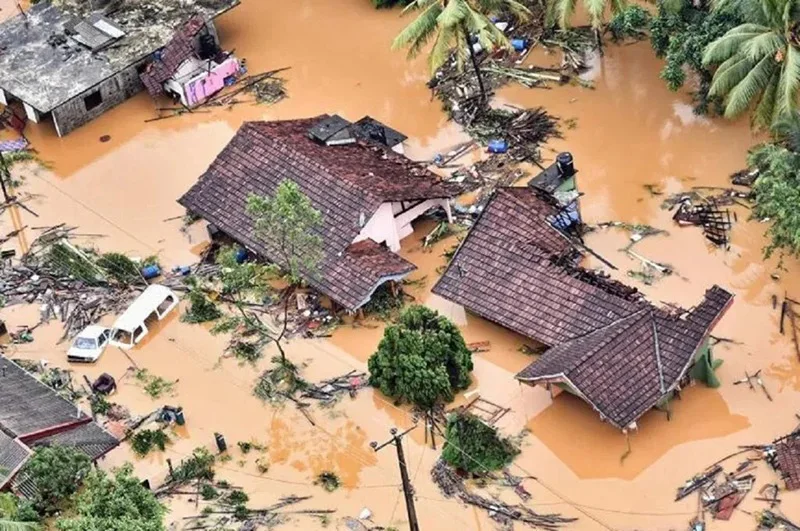
The manner in which the government succeeded in mobilising support from the international community, immediately after the devastating impact of Cyclone Ditwah, may have surprised many people of this country, particularly because our Opposition politicians were ridiculing our “inexperienced” government, in the recent past, for its inability to deal with the international community effectively. However, by now it is evident that the government, with the assistance of the international community and local nongovernmental actors, like major media organisations, has successfully managed the recovery efforts. So, let me begin by thanking them for what they have done so far.
Yet, some may argue that it is not difficult to mobilise the support for recovery efforts from the international community, immediately after any major disaster, and the real challenge is to sustain that support through the next few weeks, months and years. Because the recovery process, more specifically the post-recovery reconstruction process, requires long-term support. So, the government agencies should start immediately to focus on, in addition to initial disaster relief, a longer-term strategy for reconstruction. This is important because in a few weeks’ time, the focus of the global community may shift elsewhere … to another crisis in another corner of the world. Before that happens, the government should take initiatives to get the support from development partners on appropriate policy measures, including exceptional trade preferences, to help Sri Lanka in the recovery efforts through the medium and the long term.
Use of Trade Preferences to support recovery and reconstruction
In the past, the United States and the European Union used exceptional enhanced trade preferences as part of the assistance packages when countries were devastated by natural disasters, similar to Cyclone Ditwah. For example:
- After the devastating floods in Pakistan, in July 2010, the EU granted temporary, exceptional trade preferences to Pakistan (autonomous trade preferences) to aid economic recovery. This measure was a de facto waiver on the standard EU GSP (Generalised Scheme of Preferences) rules. The preferences, which were proposed in October 2010 and were applied until the end of 2013, effectively suspended import duties on 75 types of goods, including textiles and apparel items. The available studies on this waiver indicate that though a significant export hike occurred within a few months after the waiver became effective it did not significantly depress exports by competing countries. Subsequently, Pakistan was granted GSP+ status in 2014.
- Similarly, after the 2015 earthquakes in Nepal, the United States supported Nepal through an extension of unilateral additional preferences, the Nepal Trade Preferences Programme (NTPP). This was a 10-year initiative to grant duty-free access for up to 77 specific Nepali products to aid economic recovery after the 2015 earthquakes. This was also a de facto waiver on the standard US GSP rules.
- Earlier, after Hurricanes Mitch and Georges caused massive devastation across the Caribbean Basin nations, in 1998, severely impacting their economies, the United States proposed a long-term strategy for rebuilding the region that focused on trade enhancement. This resulted in the establishment of the US Caribbean Basin Trade Partnership Act (CBTPA), which was signed into law on 05 October, 2000, as Title II of the Trade and Development Act of 2000. This was a more comprehensive facility than those which were granted to Pakistan and Nepal.

What type of concession should Sri Lanka request from our development partners?
Given these precedents, it is appropriate for Sri Lanka to seek specific trade concessions from the European Union and the United States.
In the European Union, Sri Lanka already benefits from the GSP+ scheme. Under this arrangement Sri Lanka’s exports (theoretically) receive duty-free access into the EU markets. However, in 2023, Sri Lanka’s preference utilisation rate, that is, the ratio of preferential imports to GSP+ eligible imports, stood at 59%. This was significantly below the average utilisation of other GSP beneficiary countries. For example, in 2023, preference utilisation rates for Bangladesh and Pakistan were 90% and 88%, respectively. The main reason for the low utilisation rate of GSP by Sri Lanka is the very strict Rules of Origin requirements for the apparel exports from Sri Lanka. For example, to get GSP benefits, a woven garment from Sri Lanka must be made from fabric that itself had undergone a transformation from yarn to fabric in Sri Lanka or in another qualifying country. However, a similar garment from Bangladesh only requires a single-stage processing (that is, fabric to garment) qualifies for GSP. As a result, less than half of Sri Lanka’s apparel exports to the EU were ineligible for the preferences in 2023.
Sri Lanka should request a relaxation of this strict rule of origin to help economic recovery. As such a concession only covers GSP Rules of Origin only it would impact multilateral trade rules and would not require WTO approval. Hence could be granted immediately by the EU.
United States
Sri Lanka should submit a request to the United States for (a) temporary suspension of the recently introduced 20% additional ad valorem duty and (b) for a programme similar to the Nepal Trade Preferences Programme (NTPP), but designed specifically for Sri Lanka’s needs. As NTPP didn’t require WTO approval, similar concessions also can be granted without difficulty.
Similarly, country-specific requests should be carefully designed and submitted to Japan and other major trading partners.
(The writer is a retired public servant and can be reached at senadhiragomi@gmail.com)
by Gomi Senadhira
Features
Lasting power and beauty of words
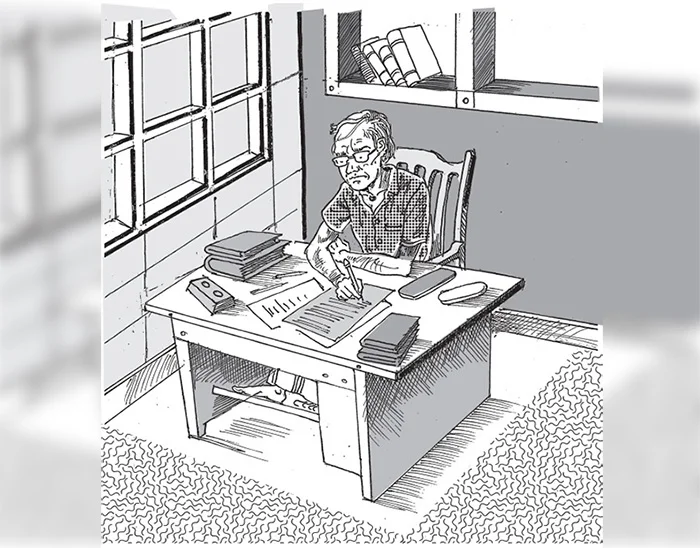
Novelists, poets, short story writers, lyricists, politicians and columnists use words for different purposes. While some of them use words to inform and elevate us, others use them to bolster their ego. If there was no such thing called words, we cannot even imagine what will happen to us. Whether you like it or not everything rests on words. If the Penal Code does not define a crime and prescribe a punishment, judges will not be able to convict criminals. Even the Constitution of our country is a printed document.
A mother’s lullaby contains snatches of sweet and healing words. The effect is immediate. The baby falls asleep within seconds. A lover’s soft and alluring words go right into his or her beloved. An army commander’s words encourage soldiers to go forward without fear. The British wartime Prime Minister Winston Churchill’s words still ring in our ears: “… we shall defend our Island, whatever the cost may be, we shall fight on the beaches, we shall fight on the landing grounds, we shall fight in the fields and in the streets, we shall fight in the hills; we shall never surrender …”
Writers wax eloquent on love. English novelist John Galsworthy wrote: “Love is no hot-house flower, but a wild plant, born of a wet night, born of an hour of sunshine; sprung from wild seed, blown along the road by a wild wind. A wild plant that, when it blooms by chance within the hedge of our gardens, we call a flower; and when it blooms outside we call a weed; but flower or weed, whose scent and colour are always wild.” While living in a world dominated by technology, we often hear a bunch of words that is colourless and often cut to verbal ribbons – “How R U” or “Luv U.” Such words seem to squeeze the life out of language.
Changing medium
Language is a constantly changing medium. New words and forms arrive and old ones die out. Whoever thought that the following Sinhala words would find a place in the Oxford English Dictionary? “Asweddumize, Avurudu, Baila, Kiribath, Kottu Roti, Mallung, Osari, Papare, Walawwa and Watalappan.” With all such borrowed words the English language is expanding and remains beautiful. The language helps us to express subtle ideas clearly and convincingly.
You are judged by the words you use. If you constantly use meaningless little phrases, you will be considered a worthless person. When you read a well-written piece of writing you will note how words jump and laugh on the paper or screen. Some of them wag their tails while others stand back like shy village belles. However, they serve a useful purpose. Words help us to write essays, poems, short stories and novels. If not for the beauty of the language, nobody will read what you write.
If you look at the words meaningfully, you will see some of them tap dancing while others stand to rigid attention. Big or small, all the words you pen form part of the action or part of the narrative. The words you write make your writing readable and exciting. That is why we read our favourite authors again and again.
Editorials
If a marriage is to succeed, partners should respect and love each other. Similarly, if you love words, they will help you to use them intelligently and forcefully. A recent survey in the United States has revealed that only eight per cent of people read the editorial. This is because most editorials are not readable. However, there are some editorials which compel us to read them. Some readers collect such editorials to be read later.
Only a lover of words would notice how some words run smoothly without making a noise. Other words appear to be dancing on the floor. Some words of certain writers are soothing while others set your blood pounding. There is a young monk who is preaching using simple words very effectively. He has a large following of young people addicted to drugs. After listening to his preaching, most of them have given up using illegal drugs. The message is loud and clear. If there is no demand for drugs, nobody will smuggle them into the country.
Some politicians use words so rounded at the edges and softened by wear that they are no longer interesting. The sounds they make are meaningless and listeners get more and more confused. Their expressions are full of expletives the meaning of which is often soiled with careless use of words.
Weather-making
Some words, whether written or spoken, stick like superglue. You will never forget them. William Vergara in his short essay on weather-making says, “Cloud-seeding has touched off one of the most baffling controversies in meteorological history. It has been blamed for or credited with practically all kinds of weather. Some scientists claim seeding can produce floods and hail. Others insist it creates droughts and dissipates clouds. Still others staunchly maintain it has no effect at all. The battle is far from over, but at last one clear conclusion is beginning to emerge: man can change the weather, and he is getting better at it.”
There are words that nurse the ego and heal the heart. The following short paragraph is a good example. S. Radhakrishnan says, “In every religion today we have small minorities who see beyond the horizon of their particular faith, not through religious fellowship is possible, not through the imposition of any one way on the whole but through an all-inclusive recognition that we are all searchers for the truth, pilgrims on the road, that we all aim at the same ethical and spiritual standard.”
There are some words joined together in common phrases. They are so beautiful that they elevate the human race. In the phrase ‘beyond a shadow of doubt’, ‘a shadow’ connotes a dark area covering light. ‘A doubt’ refers to hesitancy in belief. We use such phrases blithely because they are exquisitely beautiful in their structure. The English language is a repository of such miracles of expression that lead to deeper understanding or emphasis.
Social media
Social media use words powerfully. Sometimes they invent new words. Through the social media you can reach millions of viewers without the intervention of the government. Their opinion can stop wars and destroy tyrants. If you use the right words, you can even eliminate poverty to a great extent.
The choice of using powerful words is yours. However, before opening your mouth, tap the computer, unclip a pen, write a lyric or poem, think twice of the effect of your writing. When you talk with a purpose or write with pleasure, you enrich listeners and readers with your marvellous language skills. If you have a command of the language, you will put across your point of view that counts. Always try to find the right words and change the world for a better place for us to live.
By R. S. Karunaratne
karunaratners@gmail.com
Features
Why Sri Lanka Still Has No Doppler Radar – and Who Should Be Held Accountable
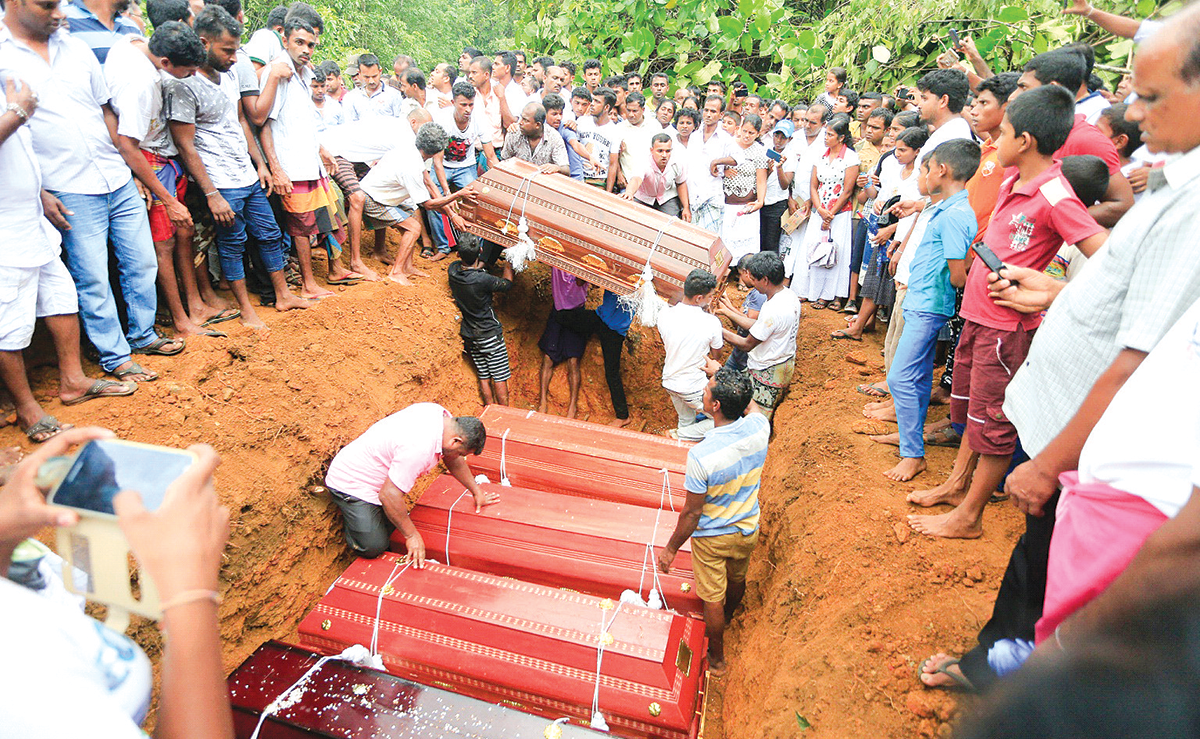
Eighteen Years of Delay:
Cyclone Ditwah has come and gone, leaving a trail of extensive damage to the country’s infrastructure, including buildings, roads, bridges, and 70% of the railway network. Thousands of hectares of farming land have been destroyed. Last but not least, nearly 1,000 people have lost their lives, and more than two million people have been displaced. The visuals uploaded to social media platforms graphically convey the widespread destruction Cyclone Ditwah has caused in our country.
The purpose of my article is to highlight, for the benefit of readers and the general public, how a project to establish a Doppler Weather Radar system, conceived in 2007, remains incomplete after 18 years. Despite multiple governments, shifting national priorities, and repeated natural disasters, the project remains incomplete.
Over the years, the National Audit Office, the Committee on Public Accounts (COPA), and several print and electronic media outlets have highlighted this failure. The last was an excellent five-minute broadcast by Maharaja Television Network on their News First broadcast in October 2024 under a series “What Happened to Sri Lanka”
The Agreement Between the Government of Sri Lanka and the World Meteorological Organisation in 2007.
The first formal attempt to establish a Doppler Radar system dates back to a Trust Fund agreement signed on 24 May 2007 between the Government of Sri Lanka (GoSL) and the World Meteorological Organisation (WMO). This agreement intended to modernize Sri Lanka’s meteorological infrastructure and bring the country on par with global early-warning standards.
The World Meteorological Organisation (WMO) is a specialized agency of the United Nations established on March 23, 1950. There are 193 member countries of the WMO, including Sri Lanka. Its primary role is to promote the establishment of a worldwide meteorological observation system and to serve as the authoritative voice on the state and behaviour of the Earth’s atmosphere, its interaction with the oceans, and the resulting climate and water resources.
According to the 2018 Performance Audit Report compiled by the National Audit Office, the GoSL entered into a trust fund agreement with the WMO to install a Doppler Radar System. The report states that USD 2,884,274 was deposited into the WMO bank account in Geneva, from which the Department of Metrology received USD 95,108 and an additional USD 113,046 in deposit interest. There is no mention as to who actually provided the funds. Based on available information, WMO does not fund projects of this magnitude.
The WMO was responsible for procuring the radar equipment, which it awarded on 18th June 2009 to an American company for USD 1,681,017. According to the audit report, a copy of the purchase contract was not available.
Monitoring the agreement’s implementation was assigned to the Ministry of Disaster Management, a signatory to the trust fund agreement. The audit report details the members of the steering committee appointed by designation to oversee the project. It consisted of personnel from the Ministry of Disaster Management, the Departments of Metrology, National Budget, External Resources and the Disaster Management Centre.
The Audit Report highlights failures in the core responsibilities that can be summarized as follows:
· Procurement irregularities—including flawed tender processes and inadequate technical evaluations.
· Poor site selection
—proposed radar sites did not meet elevation or clearance requirements.
· Civil works delays
—towers were incomplete or structurally unsuitable.
· Equipment left unused
—in some cases for years, exposing sensitive components to deterioration.
· Lack of inter-agency coordination
—between the Meteorology Department, Disaster Management Centre, and line ministries.
Some of the mistakes highlighted are incomprehensible. There is a mention that no soil test was carried out before the commencement of the construction of the tower. This led to construction halting after poor soil conditions were identified, requiring a shift of 10 to 15 meters from the original site. This resulted in further delays and cost overruns.
The equipment supplier had identified that construction work undertaken by a local contractor was not of acceptable quality for housing sensitive electronic equipment. No action had been taken to rectify these deficiencies. The audit report states, “It was observed that the delay in constructing the tower and the lack of proper quality were one of the main reasons for the failure of the project”.
In October 2012, when the supplier commenced installation, the work was soon abandoned after the vehicle carrying the heavy crane required to lift the radar equipment crashed down the mountain. The next attempt was made in October 2013, one year later. Although the equipment was installed, the system could not be operationalised because electronic connectivity was not provided (as stated in the audit report).
In 2015, following a UNOPS (United Nations Office for Project Services) inspection, it was determined that the equipment needed to be returned to the supplier because some sensitive electronic devices had been damaged due to long-term disuse, and a further 1.5 years had elapsed by 2017, when the equipment was finally returned to the supplier. In March 2018, the estimated repair cost was USD 1,095,935, which was deemed excessive, and the project was abandoned.
COPA proceedings
The Committee on Public Accounts (COPA) discussed the radar project on August 10, 2023, and several press reports state that the GOSL incurred a loss of Rs. 78 million due to the project’s failure. This, I believe, is the cost of constructing the Tower. It is mentioned that Rs. 402 million had been spent on the radar system, of which Rs. 323 million was drawn from the trust fund established with WMO. It was also highlighted that approximately Rs. 8 million worth of equipment had been stolen and that the Police and the Bribery and Corruption Commission were investigating the matter.
JICA support and project stagnation
Despite the project’s failure with WMO, the Japan International Cooperation Agency (JICA) entered into an agreement with GOSL on June 30, 2017 to install two Doppler Radar Systems in Puttalam and Pottuvil. JICA has pledged 2.5 billion Japanese yen (LKR 3.4 billion at the time) as a grant. It was envisaged that the project would be completed in 2021.
Once again, the perennial delays that afflict the GOSL and bureaucracy have resulted in the groundbreaking ceremony being held only in December 2024. The delay is attributed to the COVID-19 pandemic and Sri Lanka’s economic crisis.
The seven-year delay between the signing of the agreement and project commencement has led to significant cost increases, forcing JICA to limit the project to installing only one Doppler Radar system in Puttalam.
Impact of the missing radar during Ditwah
As I am not a meteorologist and do not wish to make a judgment on this, I have decided to include the statement issued by JICA after the groundbreaking ceremony on December 24, 2024.
“In partnership with the Department of Meteorology (DoM), JICA is spearheading the establishment of the Doppler Weather Radar Network in the Puttalam district, which can realize accurate weather observation and weather prediction based on the collected data by the radar. This initiative is a significant step in strengthening Sri Lanka’s improving its climate resilience including not only reducing risks of floods, landslides, and drought but also agriculture and fishery“.
Based on online research, a Doppler Weather Radar system is designed to observe weather systems in real time. While the technical details are complex, the system essentially provides localized, uptotheminute information on rainfall patterns, storm movements, and approaching severe weather. Countries worldwide rely on such systems to issue timely alerts for monsoons, tropical depressions, and cyclones. It is reported that India has invested in 30 Doppler radar systems, which have helped minimize the loss of life.
Without radar, Sri Lanka must rely primarily on satellite imagery and foreign meteorological centres, which cannot capture the finescale, rapidly changing weather patterns that often cause localized disasters here.
The general consensus is that, while no single system can prevent natural disasters, an operational Doppler Radar almost certainly would have strengthened Sri Lanka’s preparedness and reduced the extent of damage and loss.
Conclusion
Sri Lanka’s inability to commission a Doppler Radar system, despite nearly two decades of attempts, represents one of the most significant governance failures in the country’s disastermanagement history.
Audit findings, parliamentary oversight proceedings, and donor records all confirm the same troubling truth: Sri Lanka has spent public money, signed international agreements, received foreign assistance, and still has no operational radar. This raises a critical question: should those responsible for this prolonged failure be held legally accountable?
Now may not be the time to determine the extent to which the current government and bureaucrats failed the people. I believe an independent commission comprising foreign experts in disaster management from India and Japan should be appointed, maybe in six months, to identify failures in managing Cyclone Ditwah.
However, those who governed the country from 2007 to 2024 should be held accountable for their failures, and legal action should be pursued against the politicians and bureaucrats responsible for disaster management for their failure to implement the 2007 project with the WMO successfully.
Sri Lanka cannot afford another 18 years of delay. The time for action, transparency, and responsibility has arrived.
(The views and opinions expressed in this article are solely those of the author and do not necessarily reflect the policy or position of any organization or institution with which the author is affiliated).
By Sanjeewa Jayaweera
-

 Features6 days ago
Features6 days agoFinally, Mahinda Yapa sets the record straight
-

 News7 days ago
News7 days agoCyclone Ditwah leaves Sri Lanka’s biodiversity in ruins: Top scientist warns of unseen ecological disaster
-
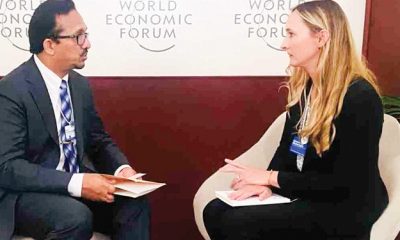
 Features6 days ago
Features6 days agoHandunnetti and Colonial Shackles of English in Sri Lanka
-
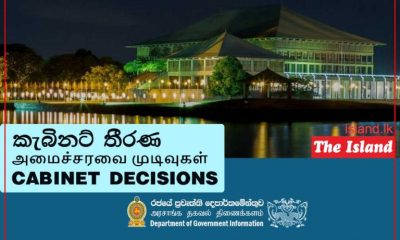
 Business4 days ago
Business4 days agoCabinet approves establishment of two 50 MW wind power stations in Mullikulum, Mannar region
-

 News5 days ago
News5 days agoGota ordered to give court evidence of life threats
-
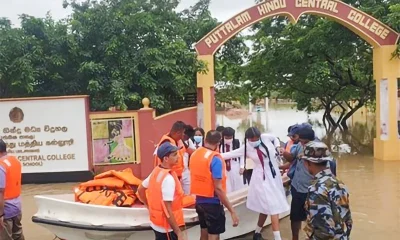
 Features7 days ago
Features7 days agoAn awakening: Revisiting education policy after Cyclone Ditwah
-

 Features5 days ago
Features5 days agoCliff and Hank recreate golden era of ‘The Young Ones’
-
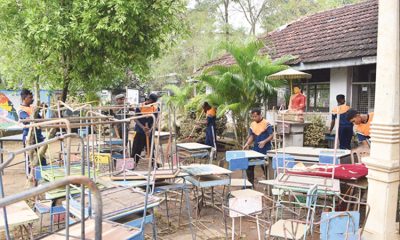
 Opinion6 days ago
Opinion6 days agoA national post-cyclone reflection period?














